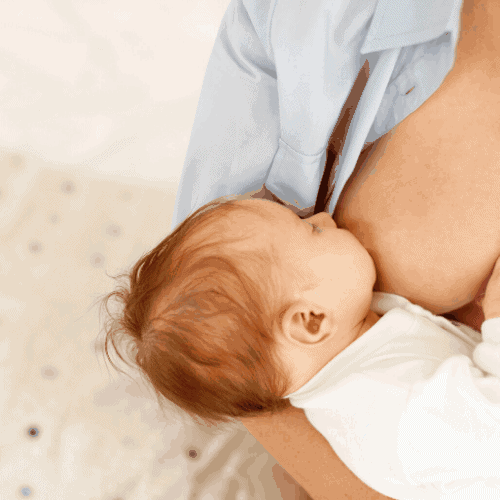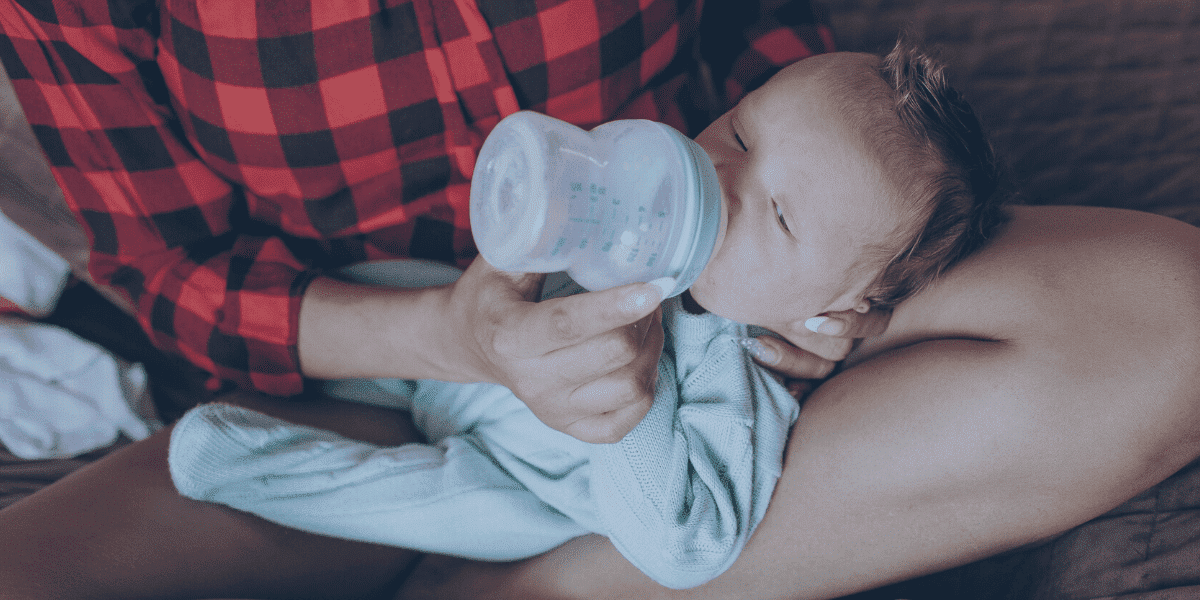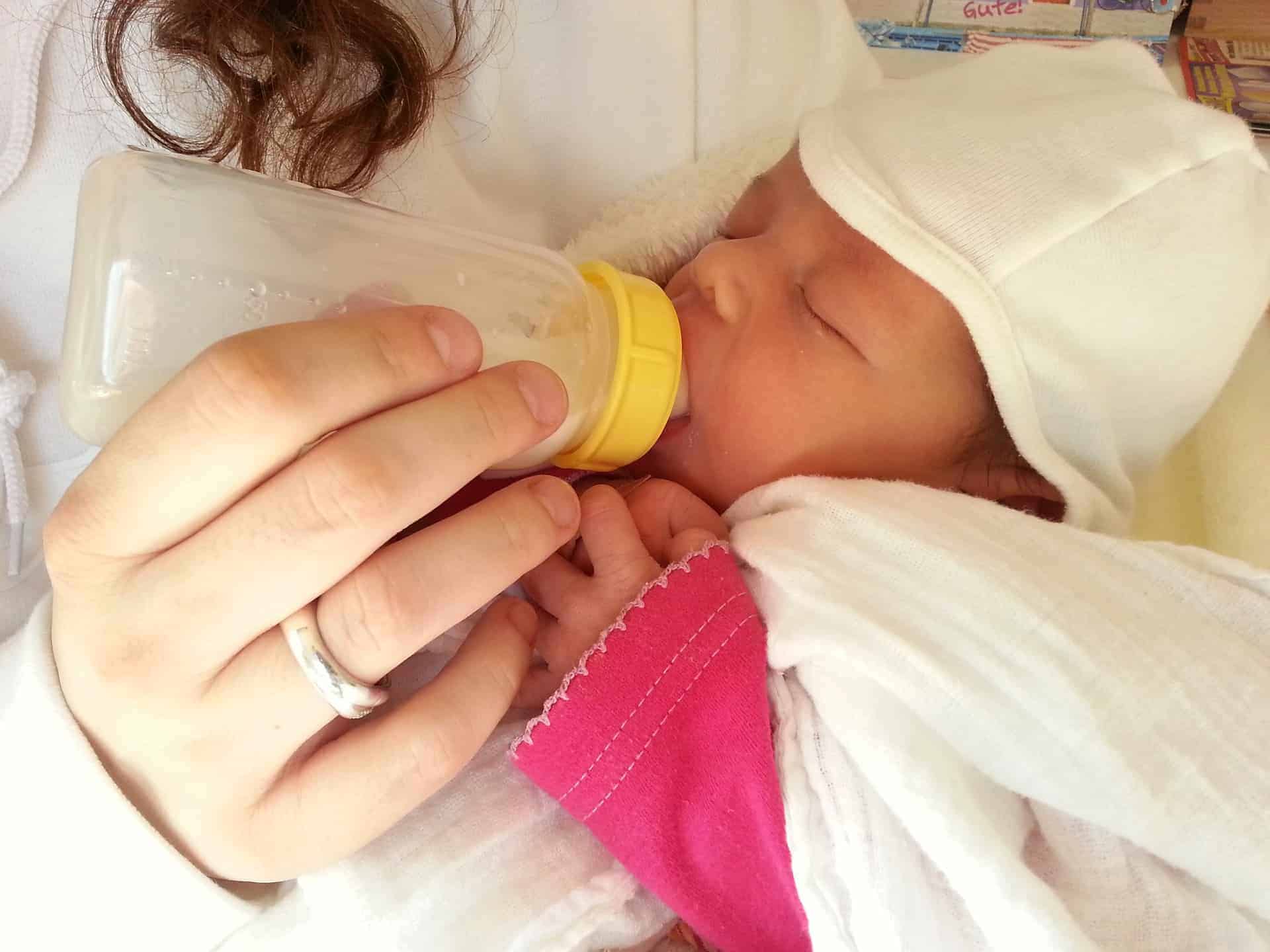Identify, treat and prevent Thrush in a breastfed baby
If you get thrush from breastfeeding, you’ll come to realize that it really sucks! You will also be worried if your baby also has caught the thrush from you.
I remember when I was breastfeeding my middle baby and it turned into weeks and months of absolute hell. The pain was excruciating.
If you are experiencing any pain while breastfeeding, which, for the record, you shouldn’t be, you might be wondering if you have thrush.
You or the baby might already have thrush, if you do, I’m so sorry, and you’re wondering what to do.
It took was a long process for me as I had months of treatment and a complete diet change, so I’m hoping that I can make it a little bit easier for you.
Here are the top ways to identify, treat and prevent thrush from Mom to baby.

As an Amazon Associate, I earn from qualifying purchases. The links below may be affiliate links. Please read my disclosure policy for more information.
What is breastfeeding thrush and why does it happen?
When the candida fungus, which naturally occurs in our digestive tracts and mouth overgrows, this causes thrush, which is a fungal infection.
If the conditions are right, it can get out of control, but most of the time, your gut flora keeps the candida stable.
If you’re breastfeeding, you can be at risk of breast and oral thrush, as well as your baby.
Thrush can happen in one of two ways. Either when a new mom develops an infection in her breast and passes it through to the baby via breastfeeding, or vice versa.
As a newborn baby, they don’t have the greatest immune systems. They’re getting used to all of the germs and infections around us, so in the first year or so, their bodies are working extra hard to fight almost everything off.
If your baby has been on anti-biotics, they might be at a higher risk of getting thrush. Or, if they have thrush on their bottom, it can spread to the mouth quite easily, which will then spread onto your breast while feeding.
You can both pass it back and forth until you realize what you need to do and what actions to take to fix it.
Is it a bad latch or thrush?
If you have a bad latch, it can cause a LOT of pain. So, nipple and breast soreness aren’t always created by thrush.
But, how do you know if it’s a bad latch or thrush that’s causing the problems?
If you are in pain, then it would be best to consult with your doctor to have swabs done so you’re 100% what the problem is. These symptoms will guide you in the meantime though.
It is natural and common for breastfeeding to be painful during the first few days and weeks. You’re a beginner at this nursing process, and so is your baby. So, you have to find the right positions and your baby will find the right pace for them.
If you’re not a new mom, and you’ve breastfed before, it can be frustrating if you’ve successfully breastfed your babies before and now, you’re in agony with the new baby.
I breastfed all 5 of my babies, and only one was painful. I was confused and constantly blamed myself, thinking that I was doing it wrong and that it wasn’t enough for my baby and that’s why it hurt.
Don’t worry. It could just be the latch rather than a bigger problem like thrush.
There are many symptoms of thrush in breastfeeding moms and babies, let’s have a look.
RELATED: ARE YOU MAKING THESE BREAST PUMPING MISTAKES?
Thrush Symptoms for Mom
If you’ve seemed to have a painful problem since you first starting nursing your baby, then it’s more than likely going to be the latch that is the issue. Although, if you were pain-free when you began, and it’s beginning to hurt, watch for these symptoms of thrush in your breasts.
Nipple pain throughout a feed
Keep a note of when the nursing pain begins to happen and whether your nipples hurt a lot when you latch on but then ease off for a minute or two. It could be latching pain.
If the pain begins when your latch, but remains throughout the duration of the feed, then it’s more than likely going to be nipple thrush.
You might be asking yourself, what does nipple soreness from thrush feel like anyway?
What nipple pain from thrush feels like
The biggest clue of breastfeeding thrush is sore nipples. They will more than likely be bright pink or red in color and shiny, and will definitely hurt when you latch your baby. There is a raw feeling on your nipples that comes with itchy, prickly or burning pain which will feel different to the soreness of poor latch.
If you’re dreading every time you have to latch your baby or are shielding your nipples from the shower, then it’s time to go and seek some help and support.
Cracked nipples
You might have noticed a crack in your nipples that doesn’t seem to be going away. Or, maybe you’ve breastfed before and tried to use lanolin to fix it.
With thrush infection, cracked nipples don’t heal like you’d expect them to.
Breast pain
If you have nipple thrush, you need to be mindful that the infection can travel to the actual breast itself.
If this does happen to you, and you’ve been that unlucky, you’ll feel shooting or deep pain in the breasts. You should mention any pain to your GP because it could change the treatment you might need.
Of course, that’s what mom needs to look out for, but what about the baby? The only way your baby can communicate is through crying. Then, as moms, we go through a long list of things that could be wrong.
Identifying thrush on a baby can be easy because there are visible signs to look out for.
RELATED: BREASTFEEDING HACKS FOR NEW MOMS
Signs of thrush in babies
Check your baby often for these signs. There is usually more than one thing to look out for.
Thrush lesions in the baby’s mouth
If you look into your baby’s mouth and notice they have little white blobs on their tongue or soft tissues, then this is a sign of thrush lesions.
They won’t come off if you touch then and can make your baby’s mouth really sore. Even if they look really innocent.
It might affect their feeding because they won’t want anything touching their mouths due to the soreness.
Baby not feeding because of yeast infection
Think about how your baby’s feeding has changed from when they would normally eat, until now when you’re suspecting thrush.
If they normally feed for a 20 minute or more stretch and seem contented and happy, and then changes to your baby dropping off the breast during feeding and not seeming overly fussed, you might have a thrush problem.
If your baby feeds, roots and latches to your breast but then drops off and cries, they might have a sore mouth.
It can be hard on a baby who doesn’t understand what’s going on, to be hungry and want milk, to then it hurting them. They will more than likely become fussier than usual.
Even if you don’t have any thrush symptoms, it’s best to check at the GP for your baby.
RELATED: THERE IS BLOOD IN MY BREASTMILK SHOULD I BE WORRIED?
Angry red rash on baby’s bottom
Check your baby’s bottom every time you change them. If there is an angry red rash on their bottom that doesn’t seem to go away with a medicated cream, and they have white lesions in their mouth, you’ll need to purchase a fungicidal cream.
If you think it is a diaper rash, this will usually go away in a couple of days with a good quality cream.
Thrush loves warm, damp places so ensure that you change them plenty so they aren’t sitting on any moisture for a length of time.
Fussy baby
If you have a fussier baby than usual, this could be normal behavior. It happens. But, if they are suffering from other symptoms as above, then thrush could be the problem.
Your baby will be hungry and in pain, so will be more fussy than normal. See your doctor if this is the case because your baby will need the correct treatment.
How to get rid of breastfeeding thrush
You’ll obviously want to know the best thing to do when you’re suffering from thrush.
It could become more of a problem if you leave it untreated. So, make sure that as soon as you notice these symptoms, please get the support from your doctor.
You might even quit breastfeeding because the pain can get so bad and your baby might not be putting on enough weight because they won’t want to feed.
Thrush can also spread to other parts of the body, so see your healthcare provider or doctor.
Thrush treatment
Both you and your baby will have to be treated for thrush. You both get treated because you’re both affected.
As long as you’re still breastfeeding, you can pass thrush back and forth. So, if you get treated but your baby doesn’t, then it will likely reinfect you.
Several times a day, you will need to apply creams to your nipples. You will also need to apply a thrush rash cream on your baby’s bottom separately from the oral treatment you’ll put in their mouth.
The doctor will probably prescribe you with an anti-fungal treatment such as Miconazole oral gel for your baby and the same for you, but the adult version.
Preventing thrush
You’ll be keen to avoid getting thrush again after you’ve had it once. There are a few ways to prevent thrush while breastfeeding, and a lot of them are common sense and easy.
Hygiene is huge
Start with hygiene if you want to prevent thrush. It is hard to get rid of and you’ll definitely need to be careful if you want to stop it from coming back.
Wash your hands
This is obvious, and we’re taught it constantly during our lives. Make sure you’re washing your hands after changing the baby and doing any other unhygienic tasks.
Boil pumping and feeding equipment
You can sterilize your pump parts by sterilizing tablets or a steam sterilizer. You’ll need to take a little bit more care. You could otherwise get yourself and baby treated, get treatment and become infected again.
You can fix thrush!
While breastfeeding, you might be really determined to get rid of thrush. Ensure to pester your health professional until they give you the right treatment you need.
You can definitely beat thrush and prevent it from coming back, and once you have that system tied down, you’ll have a balance of beating it ultimately.
REFERENCES
https://www.medicinenet.com/is_thrush_contagious/article.htm#what_is_thrush
https://www.emedicinehealth.com/oral_thrush/article_em.htm






